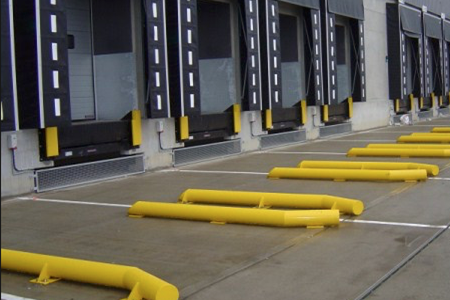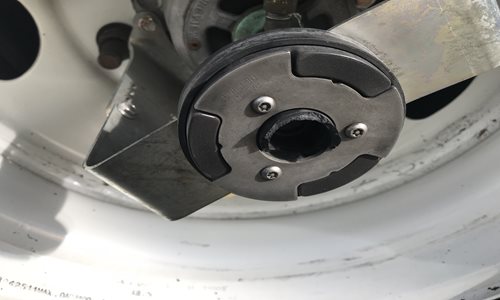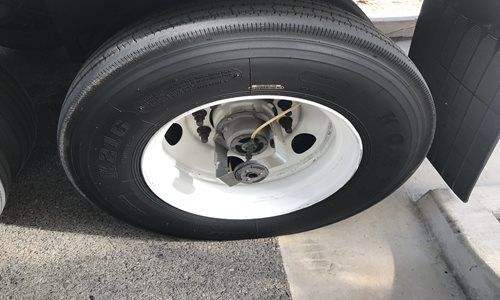From time to time when backing into a dock, you will notice some facilities have yellow metal wheel guides to help properly set up the trailer for alignment into the dock door. In my personal opinion, 75-80’ lines of reflective paint is plenty enough assurance I am in the dock straight, but we all know there are those warehouses out there that consider this a necessity sometimes! Though a bit overkill when it comes to assuring proper trailer placement, these devices are pretty straightforward in helping guide the trailer wheels straight back into position until the dock is bumped. The difference in their design you need to be aware of, which got the better of me on one occasion this week, is the height in which they are mounted!

This week I took an offer to do some stock transfer loads for a large national paint manufacturer from a good contact of mine. The opportunity paid well and would be an easy way to get my own personal truck back home from its usual morning delivery location for those days. As I pulled up to the shipper in the pre-dawn hours for the first of these loads, I could see that this facility had wheel guides with reflective tape wrapped around them, which was nice in those dark hours before sunrise. Where I failed to put two and two together that morning though, was not checking the height of those guides compared to the height of my Flow Below trailer aero wheel covers.

Being that most of these devices were usually mounted at rim-height or below and being slightly rushed by needing to back in off a busy street, I slid my tandems to the rear for the steeply angled dock and proceeded to back into loading position between the guides. As I knelt down to make sure the auto-chock was engaged, I noticed my rear Flow Below cover cocked at an angle and upon closer inspection noticed the release button and release spring inside the middle of it were pretty much sheared off from the wheel guide, which was easily mounted twice as high as the ones I was used to encountering. At that point I knew I would be left with one “naked” wheel until I could contact my rep at Flow Below and get another replacement wheel-end piece shipped out. Next time, I will be removing my wheel covers when I see these wheel guides present at a customer!

As much as I preach that routine and complacency can get you in trouble, I am not afraid to highlight when it gets me as well, in order to help others learn from my mistakes. Whether it was the time I crushed an Aero-X rear wheel deflector having to back over a curb into a dock, or this time damaging a wheel cover, my goal is to remind everyone to look out around you. Having a truck with so much aero in a non-aero environment like inner-city Los Angeles, makes it so that I just have to pay extra attention to the situations I get myself into. The aero works and saves money every time I am at highway speeds, which still accounts for a large percentage of my travel between such a large area of coverage as Southern California and trips to Las Vegas. In the end the savings make the aero worth it, as long as proper caution is exercised!